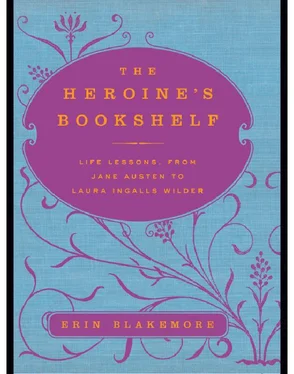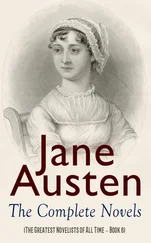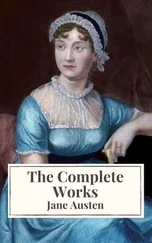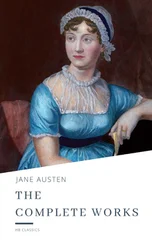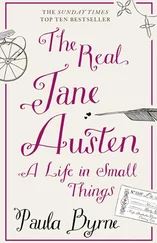Bob Finch was an artist, an alcoholic, and most importantly, a needy man. He entered her life just as George was moving onward and upward. Left in the dust of her husband’s ambitions (he eventually went on to serve in the U.S. Senate and practice before the Supreme Court), Betty focused instead on Bob, a man whose desperation and dramatic nature mirrored her own. She separated from George in 1933.
Alone now with her daughters, Betty struggled as a single mother with no money, no time, and no emotional support. She left Yale and returned to New York, renting an apartment from her again-widowed mother in Queens. But the proximity to her stepfather’s memory was painful. Though she never gave details, Betty later hinted that he had sexually abused her. Hungry and concerned about her girls, Betty started selling confession stories to pulp magazines for a few cents a word. The income financed a move to her own apartment a few subway stops away from her mother. The girls came along, attending school and shoveling coal into the furnace while their mother wrote and worked as an actress in Manhattan.
Her children, bewildered by their uprooted life, had started skipping school and were often sick. Betty was able to scrape together enough for long summer trips to a beach cottage, but the girls had to stay there alone as she commuted back to odd jobs in the city. They concealed their misery from Betty, just as she hid hers from them. They had no way of knowing that she worried about them every waking moment, every second that her unrelenting scramble for enough money to survive kept her from them. The Great Depression had come, tearing strong families apart and leaving unprecedented poverty in its wake. But for Betty, this tumultuous era was a vehicle for career success. She had always had an affinity for the underdog, the poor man: now she would be paid to write about him. When federal arts jobs got funding, she was first in line at the employment office.
Betty quickly found her way to the job of her dreams, moving to North Carolina to pursue a federal theater project that sought to bring seasoned artistic professionals to the South. Was she following her literary ambitions or attempting to reconstruct the perfect family? Both: Bob Finch came with Betty to North Carolina.
To Betty and her girls, Chapel Hill was like another world, a place far removed from the gritty, ugly streets of New York. Like the tree she would write about a few years later, Betty was quick to take root. She settled into a small apartment with the girls, befriending the community’s most beloved citizens and writing plays as quickly as her ramshackle Smith-Corona could type them. But her financial troubles persisted. The $60 a month George sent for the girls was supplemented by the odd story sale or writing award, but it still wasn’t always enough for things like clothing and heat. Now that her daughters were in high school, Betty drew upon her own distant relationship with her mother and allowed them significant freedom. In later years she would learn that this sudden change in attitude had confused her daughters, who longed for their mother’s approval and love.
But Betty had other worries. Her ties to Bob had flourished along with her writing, and at first the house had been busy with the impassioned collaboration of two lovers. Bob visited often, filling the house with cheer and humor, but his alcoholism and his constant infidelity wore on Betty. In order to cling to the people she loved, she was constantly called upon to let them go. At one point in the late 1930s she had to ship Mary and Nancy back to their father in Connecticut because she simply didn’t have enough money to make ends meet. She herself could subsist on next to nothing, but the girls couldn’t. They wanted to lead normal lives. George grumbled about Betty’s failure to provide for her daughters; she, too, worried constantly about her inability to keep her family together. Still she persisted in her writing, sending the girls off to their father during the summers and even using money her daughters found on the ground to buy food for the family.
All along, something inside her compelled her to keep on writing. After making sure the girls had the bare essentials, Betty always turned back to the work that had become all-consuming: an autobiographical novel about her childhood. It took a lot to revisit Brooklyn in her mind, to return to that harsh place where families crowded three or even four generations into the same small apartment, a place rampant with disease, crime, and despair. As she started to spin the story of a skinny, dreamy girl and her hardened mother, she didn’t realize she had begun to exorcize childhood demons and communicate with her own daughters. The work that had kept Betty separate from her children’s lives for so long was now a conduit of sorts. She wrote while the girls were at school, leaving that day’s production in a box next to her desk. As soon as they returned home, her daughters would snatch up the typewritten pages and read more about Francie Nolan and her Brooklyn neighborhood. In its way, A Tree Grows in Brooklyn was Betty’s gift to them, and to herself.
It’s not an easy book to describe or even to read. Grim, even desperate in parts, it takes a steady look at what it’s like to be a child whose existence depends on an undependable family in an unbearable state of poverty and want. Like Betty, Francie is obsessed with her dangerously incapable father and repulsed by her make-do mother. Betty’s many struggles with love and duty smash into one another in the form of Katie Nolan, a mother who ruins her once-beautiful hands and almost murders a man who would harm a daughter whose brother she favors, whose education she sacrifices to family finances, and whose success she painfully doubts. The book’s conflict between mother and child is unsettling and wildly sad. It’s also unflinching and real for any woman who has crossed the bridge between childhood and the adult world.
There are many heroines to be had in Francie’s Brooklyn, for again and again it is women who form an almost impenetrable circle of support and competence around the lives of their children and husbands. Betty writes her heroines as enemies and saviors at once; her women go through the motions even when the men in their lives are hurt, sick, tired, and incapacitated by drink. They starve for their children’s sakes, making a pathetic game out of poverty and starvation, whispering their secrets to one another in the few stolen moments of leisure they somehow manage to wring out of their lives. For Smith, a mother’s role is more than that of protector. She’s the creator and the destroyer of an entire world.
A Tree Grows in Brooklyn’s family ties are about inheritance, the ways in which people obtain weaknesses and peculiarities and beauty just by being born. Tied to each other by bonds they can’t explain or even see, Francie’s family is as much the head on the table, devastated by the weight of grief, as it is the brother and sister sticking together beneath a brutal neighborhood tradition and a crushing Christmas tree. As Francie loves and hates and fights for self-definition, she often finds that her family is all that stands between her and starvation, abuse, and death.
Luckily for us, Betty Smith doesn’t just do blood relations. No, she also gives Francie a chosen family in addition to the one she’s born into, a group of kids who clog up Brooklyn’s porches and stoops, girls who prepare themselves for their lovers, and shopkeepers whose harassment is as much a part of childhood as Santa Claus. Extended and nontraditional families are just as important as the ones Betty’s characters are bonded to genetically. The gentle, golden-hearted aunt whose actions threaten the social order but whose arms are full of love joins a standoffish librarian and gossiping factory workers as people who affect Francie just as much as Johnny Nolan’s sidewise singing or Katie’s rough-handed attempt at motherly affection. And as she learns to love books, Francie does what we do: assembles an even wider family of fictional characters, using books to help her escape and survive her own family life.
Читать дальше
